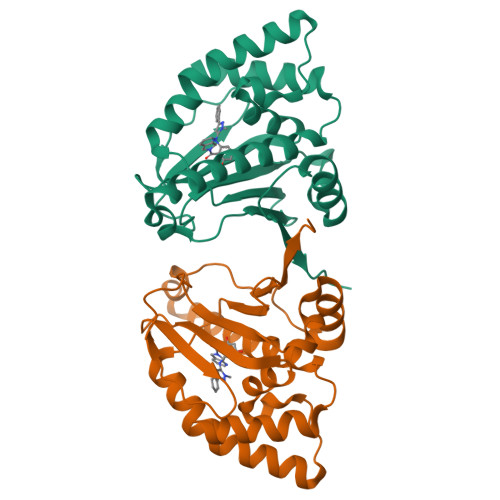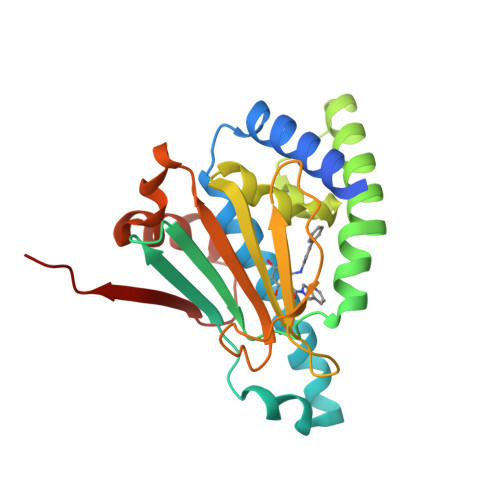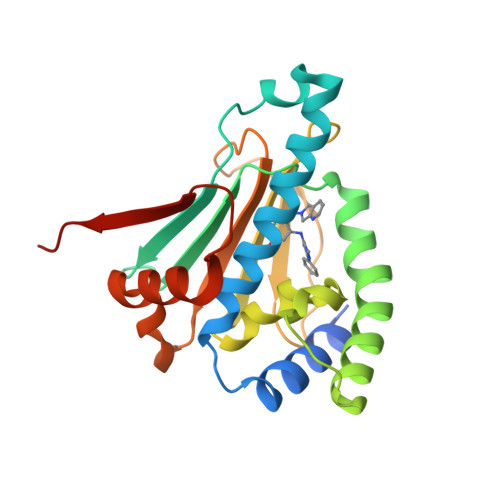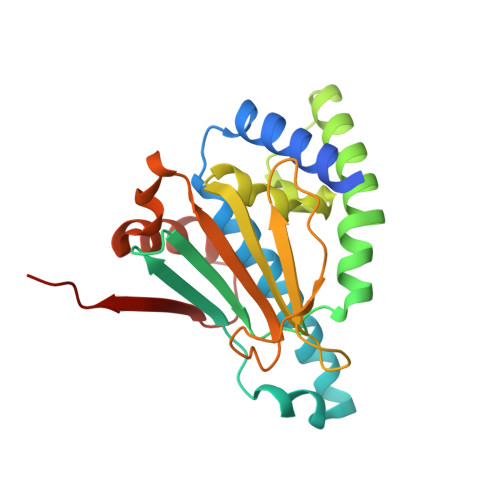Fungal-Selective Resorcylate Aminopyrazole Hsp90 Inhibitors: Optimization of Whole-Cell Anticryptococcal Activity and Insights into the Structural Origins of Cryptococcal Selectivity.
Marcyk, P.T., LeBlanc, E.V., Kuntz, D.A., Xue, A., Ortiz, F., Trilles, R., Bengtson, S., Kenney, T.M.G., Huang, D.S., Robbins, N., Williams, N.S., Krysan, D.J., Prive, G.G., Whitesell, L., Cowen, L.E., Brown, L.E.(2021) J Med Chem 64: 1139-1169
- PubMed: 33444025
- DOI: https://doi.org/10.1021/acs.jmedchem.0c01777
- Primary Citation of Related Structures:
7K9R, 7K9S, 7K9U, 7K9V, 7K9W - PubMed Abstract:
The essential eukaryotic chaperone Hsp90 regulates the form and function of diverse client proteins, many of which govern thermotolerance, virulence, and drug resistance in fungal species. However, use of Hsp90 inhibitors as antifungal therapeutics has been precluded by human host toxicities and suppression of immune responses. We recently described resorcylate aminopyrazoles (RAPs) as the first class of Hsp90 inhibitors capable of discriminating between fungal ( Cryptococcus neoformans , Candida albicans ) and human isoforms of Hsp90 in biochemical assays. Here, we report an iterative structure-property optimization toward RAPs capable of inhibiting C. neoformans growth in culture. In addition, we report the first X-ray crystal structures of C. neoformans Hsp90 nucleotide binding domain (NBD), as the apoprotein and in complexes with the non-species-selective Hsp90 inhibitor NVP-AUY922 and three RAPs revealing unique ligand-induced conformational rearrangements, which reaffirm the hypothesis that intrinsic differences in protein flexibility can confer selective inhibition of fungal versus human Hsp90 isoforms.
Organizational Affiliation:
Department of Chemistry and Center for Molecular Discovery (BU-CMD), Boston University, Boston, Massachusetts 02215, United States.




















